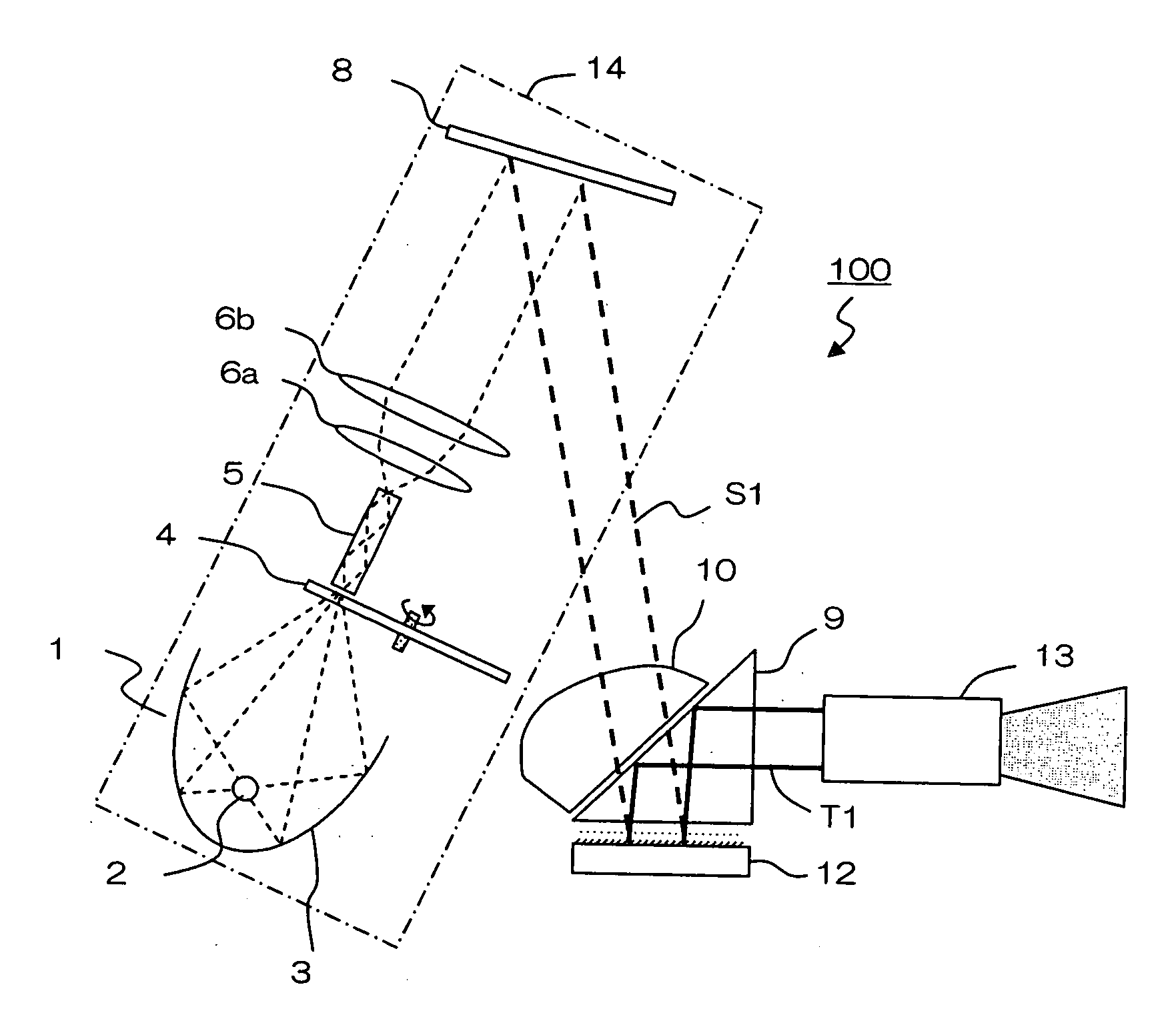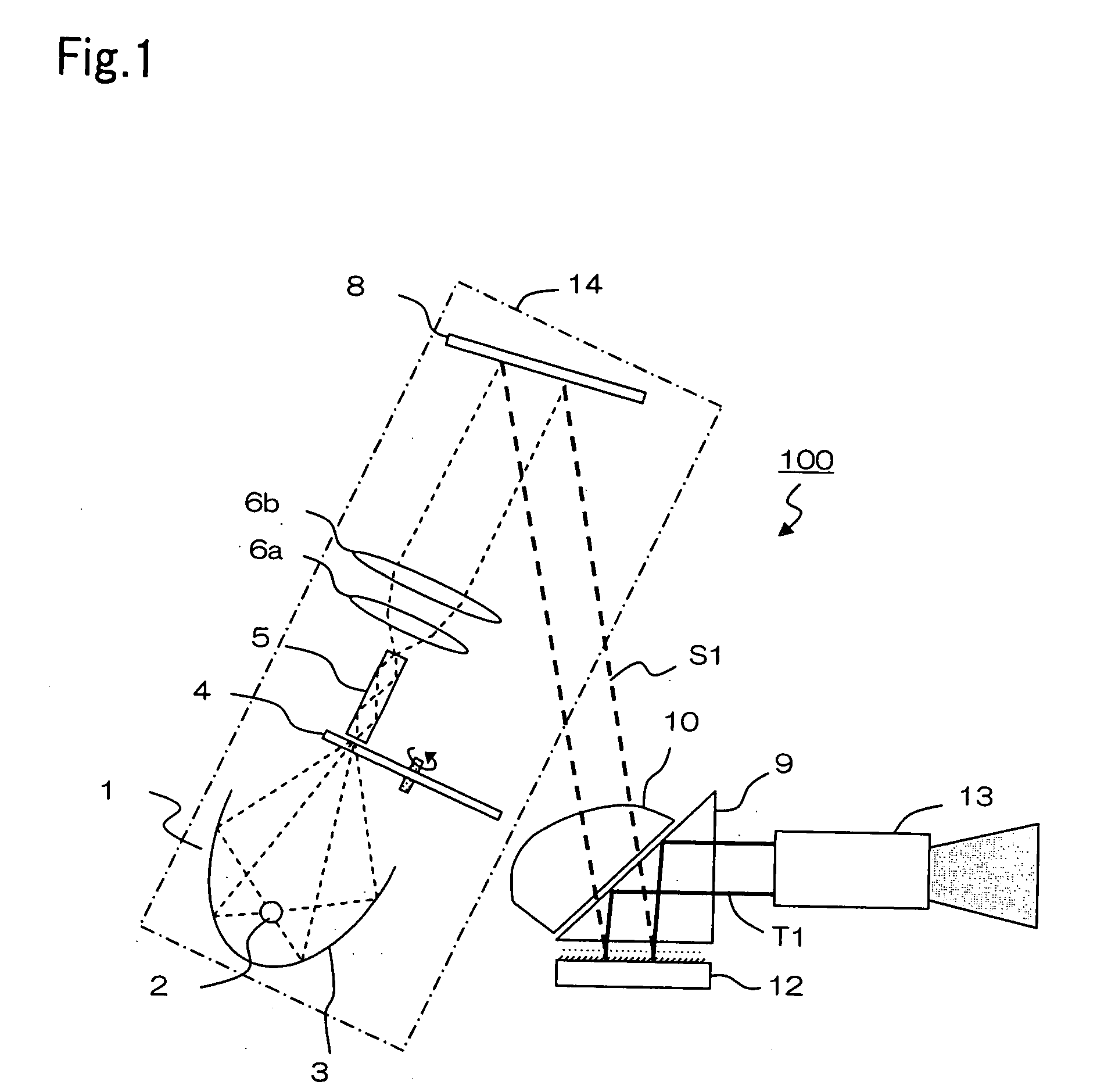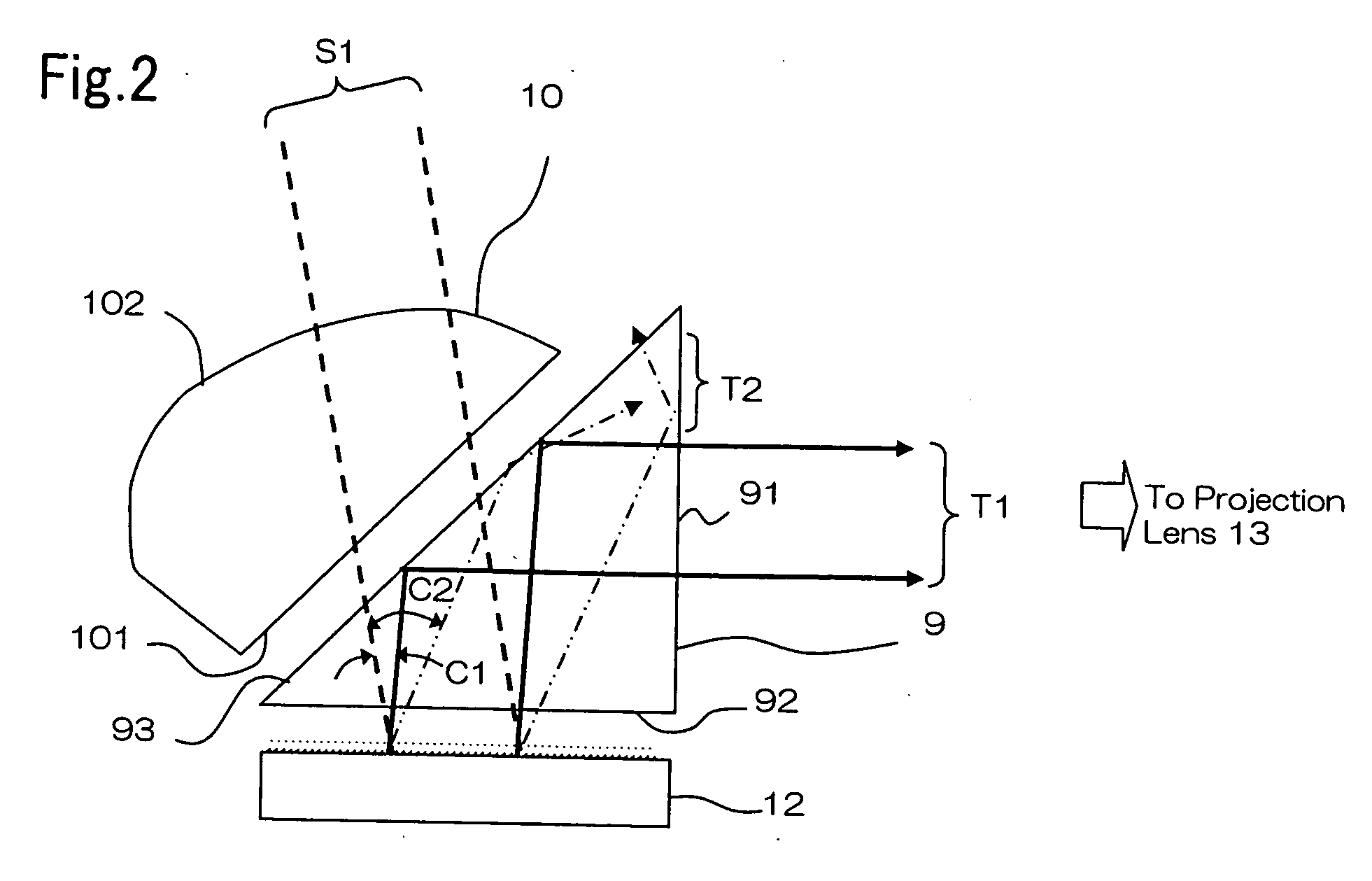TIR PRISM for a projection display apparatus having a partially masked surface
a projection display and prism technology, applied in projectors, television systems, instruments, etc., can solve the problems of inferior contrast, undesirable light beams, etc., to prevent stray light, improve contrast, and prevent the occurrence of stray light on the screen
- Summary
- Abstract
- Description
- Claims
- Application Information
AI Technical Summary
Benefits of technology
Problems solved by technology
Method used
Image
Examples
example
[0066] Tests were conducted to study the conditions of the masking material and the surface of the shield area.
[0067] The first and the second prism surfaces of a prism and the second lens surface of a condenser lens were coated for masking. FIG. 9 shows the relationship between the incident angle and the reflectivity of a light beam that is incident on interface 2 (the masking material) which is shown in FIG. 6. Such materials as carbon (n2=1.73, k2=0.58), air (n2=1, k2=0), silver (n2=0.20, k2=3.44), and aluminum (n2=1.44, k2=5.23) are shown in FIG. 9 as examples of coating materials.
[0068] First, if the coating is formed of air (no coating) and n1>n2, then total internal reflection occurs on interface 2 for the incident angle that is equal to or larger than 41.2°. If the coating is formed of a metal such as silver or aluminum, then the light beam is not totally reflected internally on interface 2, because the refractive index is higher than that of the material of the prism. How...
PUM
 Login to View More
Login to View More Abstract
Description
Claims
Application Information
 Login to View More
Login to View More - R&D
- Intellectual Property
- Life Sciences
- Materials
- Tech Scout
- Unparalleled Data Quality
- Higher Quality Content
- 60% Fewer Hallucinations
Browse by: Latest US Patents, China's latest patents, Technical Efficacy Thesaurus, Application Domain, Technology Topic, Popular Technical Reports.
© 2025 PatSnap. All rights reserved.Legal|Privacy policy|Modern Slavery Act Transparency Statement|Sitemap|About US| Contact US: help@patsnap.com



